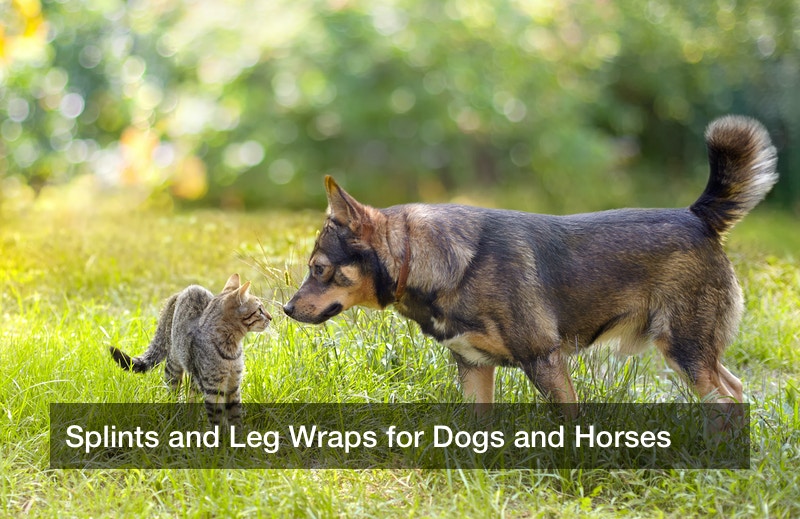

A number of animal species have long since proven themselves vital for performing labor, and this is why many species have been domesticated (and their domestication long predates the written word). Horses are a good example of this, being useful beasts of burden for drawing carriages and carts, serving as war mounts, and much more. Dogs were famously the result of wolf domestication, and dogs evolved to guard human settlements and transition from predator to scavenger. By now, many horse and dog-related jobs have been automated, such as riding horses into battle, but the owners of these animals will take good care of them all the same. Horses are often ridden and bred as a hobby, and they can take part in horse shows and sometimes serve as park ranger mounts. Dogs are usually pets, but they can also work as bomb or drug detectors, not to mention search and rescue operations. It is important to keep these animals healthy, which includes the use of hock splints for dogs, dog leg wraps, and calf braces, among other items.
Caring for Horses
Horses are beloved animals and are often found on farms and ranches. In the past, specialized horse doctors were central to keeping these important work animals healthy, and even today, horse owners can call upon horse doctors for help if something goes wrong. For example, a horse may begin acting strangely, such as refusing to run, or refusing to allow any people or items be placed on it. Or, the horse is shifting its weight repeatedly from leg to leg. All this may be a warning sign of a broken or fractured bone, sprained muscles, or joint issues, so a horse doctor may be called over to make a diagnosis.
Surgery is one thing, but not all cases require invasive operations. Often, a horse will need medicine and braces or wraps for its legs and ankles, such as ankle wraps or calf braces. A broken bone may be set and a splint and bandages applied to help it heal, and a bone fracture or a sprain may call for braces. All of this allows the horse to continue walking and trotting as normal, without distressing the affected body part further during the recovery process. This is important for the horse’s comfort, and this also makes it easier to move the horse around from place to place if need be, such as walking it to a different part of the ranch.
Dog Treatment Done Right
Pet owners should always be on the lookout for any changes in their pet’s health, and while household dogs and cats avoid many hazards that strays face, they might still get hurt. For example, a dog may suffer a glancing blow from a car or motorcycle, or they might get in a fight with a stray or fall from a height. Or, a dog may get a paw snagged on a hole or tree root while running, and injure its hock joint (similar to a human wrist or ankle). Old dogs may develop arthritis, as may geriatric cats. If a dog is limping or if the owner witnesses it get hurt, then the dog must be taken to a vet clinic or animal hospital right away.
Treatment varies and may include medicine and pills, and it may also involve hock splints for dogs, or ankle wraps or splints for broken bones. The idea isn’t too different from a horse’s leg brace or wraps; such hock splints for dogs will allow a dog to walk and run normally without putting further strain on the affected joint or leg. This makes the recovery process faster, and it means that the dog doesn’t have to sacrifice its mobility. Dogs vary in size and shape, so a vet may take the injured pet’s measurements to ensure a good fit for any hock splints for dogs used, or ankle brace socks or braces for calves. As a bonus, the pet may be provided with a therapeutic dog bed, which is thick and designed to easily accommodate the dog’s body when it lays down. This conforming bed may prevent strain or pressure on the dog’s body during recovery, and it can be fitted into a kennel or crate during transport, too.